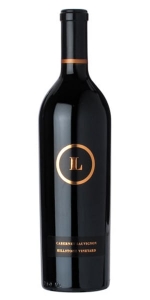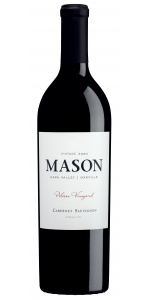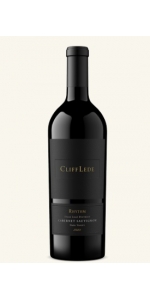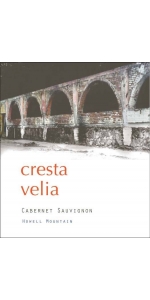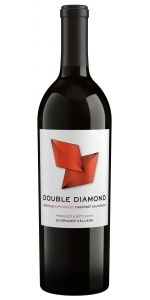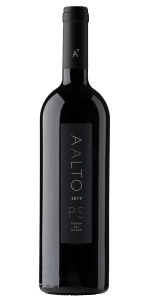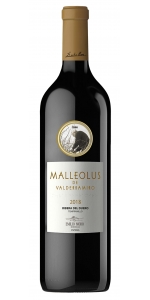Stag's Leap Wine Cellars S.L.V Cabernet Sauvignon 2014
| Country: | United States |
| Regions: | California California (Napa) |
| Winery: | Stags Leap Winery |
| Grape Type: | Cabernet Sauvignon |
| Vintage: | 2014 |
| Bottle Size: | 750 ml |
High gloss metallic paint with a forged iron big-block under the hood - our 2018 Hillstone Vineyard is a real show car. Deeply fruited with hi-tone huckleberry from a prime hillside site in Rutherford, the wine has a thick powerband with crushed stone and coffee bean, retaining polish and precision straight through the tail pipes.
Review:
Lots of pure cassis and blueberry- like fruits as well as licorice, graphite, and crushed rock-like minerality, emerge from the 2018 Cabernet Sauvignon Hillstone Vineyard. It's a full-bodied, opulent, powerful Cabernet Sauvignon that doesn't pull any punches on the fruit or texture scale, yet has ripe, present tannins, a light, elegant texture, and a great finish. Give bottles an hour in a decanter if drinking any time soon, or better yet, hide bottles for 2-3 years. It's going to evolve for 15+ years in cold cellars.
-Jeb Dunnuck 95 Points
Mason Cellars Pelissa Vineyard Cabernet Sauvignon is made from 100 percent Cabernet Sauvignon.
The 2020 Mason Oakville Cabernet Sauvignon is quintessentially Oakville from nose to finish. Attractive fresh blackberry, red current and chocolate with a hint of sweet oak boast out of the glass. This wine showcases graphite, velvety tannins and concentrated, beautifully balanced flavors with a bit of spice and white pepper. These bold flavors typical of Oakville Cabernet are rounded out with velvety tannins, a weighty mid-palate and a long, juicy finish.
Production Notes:
The fruit was delicately hand-picked in the early morning hours and brought into the winery for processing. The grapes were crushed, about 60% whole berry, and cold soaked for three days before being inoculated for primary and malo-lactic fermentation. Once dry, the wine was put down to barrel for 20 months in medium toast French oak, 25% of which was new.
Vineyard Notes:
Grapes for our 2020 Mason Cabernet Sauvignon are sourced exclusively from the Pelissa Vineyard in Oakville. This vineyard spans 60 acres and is planted to Old BV Clone 7 Cabernet Sauvignon as well as Zinfandel. This vineyard is named for Andrew and Babe Pelissa, who after their marriage on August 30, 1930, made their home at the site of this vineyard which, at the time, was a dairy. Oakville is the core of Napa Valley’s famed Cabernet Sauvignon production, and this site is no exception with the flawless blending of climate and soil to create a remarkable wine.
Review:
“This firmly structured, well-balanced wine has the feel of a classic Bordeaux blend. Just-ripe red and black fruits blend with subtle toast, cedar and mint on a moderately tannic, slightly tangy texture. The wine is tasty enough to decant and drink soon with grilled lamb chops or roast chicken. Best from 2026–2036.” – Jim Gordon
-Wine Enthusiast 94 Points
Cliff Lede Rhythm Cabernet Sauvignon Stags Leap District Napa Valley is made from 86% Cabernet Sauvignon, 7% Petit Verdot, 5% Merlot, 2% Cabernet Franc
The inaugural vintage of Rhythm couldn’t have come in a better vintage to flaunt the greatness of the Stags Leap District. Dark purple with vermillion-tinged edges, the plush and refreshing lures the taster with a multidimensional perfume that fills the glass with notes of jasmine, lavender, and spring flowers. Interwoven into the floral notes are unctuous layers of plum, blackberry, and black currants. Loads of smoked cardamom, cinnamon, and black licorice melt on the palate where vibrant acidity carries the long finish to a state of balance and equilibrium. – Christopher Tynan, Director of Winemaking.
Review:
Powerful, seamless and saturated with flavor, this giant of a wine goes deep in black currants, black cherries and mint aromas. The dense, rather firm texture holds a tasty mélange of black cherries and black figs shaded by cedar, cocoa, tobacco and espresso. It needs several years to open up. Best from 2028–2040.
-Wine Enthusiast 97 Points
Clif Lede Cabernet Sauvignon Stags Leap is made from 82% Cabernet Sauvignon, 8% Merlot, 7% Cabernet Franc, 3% Petit Verdot.
The fruit was sourced from the hillside terraces of our Poetry Vineyard, our Twin Peaks Vineyard estate surrounding the winery, and a few neighboring vineyards in the Stags Leap District. The wine is composed of small lots from our best blocks, representing a diverse range of carefully selected clones and rootstocks. From Poetry’s exposed, rocky terraces boasting volcanic origins, to the ancient riverbed alluvial soils of Twin Peaks, the breadth of contributing sites translates into a wine of impressive complexity.
Grapes were picked in the darkness of the early morning hours. The freshly-harvested fruit immediately underwent rigorous selection by our three-tiered sorting process, which included our cutting-edge optical sorter. Whole berries were gently delivered by gravity to tank using our crane system, minimizing disruption of berry integrity. Cold soaks lasted approximately seven days, and fermentations were managed via a combination of délestage, pumpovers, and punchdowns. Extended maceration ranging from four to five weeks fine-tuned our tannin profiles, allowing us to perfect mouth feel and wine complexity. The wine was aged in French oak barrels, 38% of which were new, for twenty-one months.
Review:
This wine substantially overdelivers on its price point, presenting a dark fruit profile, generous tannin and oak, and an expansive full-bodied style. Blended with 8% Merlot, 7% Cabernet Franc and 3% Petit Verdot, it is approachable while never forgetting its structured, complex roots.
-Editors' Choice Wine Spectator 95 Points
Early to bud and early to ripen, the 2014 vintage was our third drought year in a row. Dry, even temperatures marched the grapes along at a steady clip all year and created a wine with beautifully integrated fruit, acidity, and tannin.
Dense and dark magenta in color, this is a lithe and energetic vintage with lifted aromatics and a purity of fruit that lights up the medium-bodied tannin structure. The nose promises fresh black fruits, cherries and a touch of graphite, and the palate completely delivers. Juicy blackberry, plum, and bright cherry explode in the mouth, and develop into savory notes of baked black fruit and fresh pencil shavings on the mid-palate.
Eagle Summit Vineyard’s signature eucalyptus appears on the back palate to brighten the fruit, showing fragrant peppermint and warm, toasty spices through the finish. Whether you open it young or wait a few decades, this vintage does Howell Mountain proud--sophisticated and smart, with a rustic wild side.
Cresta Velia Cabernet Sauvignon Howell Mountain is made from 100 percent Cabernet Sauvignon.
Aged in 100% French oak (86% new)
• 100% Cabernet Sauvignon from Eagle Summit Vineyard on Howell Mountain
• Equal amounts of clone 4 and clone 7
• unfined and unfiltered
Review:
"The 2014 Cabernet Sauvignon is 100% Cabernet aged 20 months in 86% new French oak, with the typical suspects in terms of cooperage – Darnajou, Taransaud, and Remond. This opaque purple-colored wine has plenty of mulberry and blackcurrant fruit along with hints of blackberries, camphor and incense. The are some notes of unsmoked cigar and licorice as well. Ripe, medium to full-bodied and luscious, it is a classic to drink over the next 15 or more years. - RP"
- Robert Parker's Wine Advocate (Issue #228, December 2016), 90 pts
Double Diamond by Schrader Oakville Cabernet Sauvignon is made from 100 percent Cabernet Sauvignon.
Barrels: 54% new French oak, 46% second-use Schrader Darnajou French Oak
The 2022 Cabernet Sauvignon offers concentration, lively acidity, and refined tannins that have become the hallmark of the 2022 vintage. The nose holds notes of black raspberry, toasted cedar, juicy plum, and pennyroyal mint—a Napa Valley Cabernet Sauvignon signature. The palate is mouthwatering with intricately woven layers of blackberry compote, dark chocolate shavings, oolong tea, and flint. The dynamic flavors carry across the mid-palate in vivid harmony into a long, floral finish. This wine is ready to drink upon release but will cellar well for years to come.
Double Diamond is sourced exclusively from a complement of prime vineyard estates. Sourced from the same famed vineyards as its beloved inspiration Schrader Cellars in Napa Valley’s world-renowned Oakville AVA, including our To Kalon Vineyard.
Stags Leap Wine Cellars S.L.V. Cabernet Sauvignon is made from 100% Cabernet Sauvignon.
Stag’s Leap Wine Cellars stunned the world in 1976 when its 1973 S.L.V. Cabernet Sauvignon bested some of Bordeaux’s first-growth wines in a tasting in Paris. It was the winery’s first commercial vintage, a wine produced from young, three-year-old vines. While the “victory” over the French in “The Judgment of Paris” continues to be hailed throughout the world – and the winery is still humbled by the achievement – Stag’s Leap Wine Cellars enters its golden anniversary year with a commitment to producing more complex and age-worthy wines. No resting on laurels, no autopilot, no complacency, but rather a drive to ensure the next 50 years are even more glorious than the first 50.A step back in time puts Stag’s Leap Wine Cellars’ current and future plans in perspective.
The estate was founded in 1970 with the purchase of orchard land in what is now the Stags Leap District AVA in southeastern Napa Valley. Cabernet Sauvignon and Merlot grapes replaced the prunes and walnuts, and the winery was built in 1972. A wine was made there in that year, but it was the 1973 S.L.V. Cabernet Sauvignon that impressed – and shocked – a panel of experts on French wine. In the 1976 Paris Tasting, a blind tasting, they chose S.L.V as the finest red wine in the group, without knowing its provenance. The outcome brought international recognition to the infant Stag’s Leap Wine Cellars, the nascent Napa Valley wine region, and the entire American wine industry and put all on a path to worldwide renown.
S.L.V. Vineyard S.L.V. soils are predominantly volcanic in nature and contribute multilayered structure, concentration and spicy intensity, often referred to as the “fire-like” elements. S.L.V., also known as Stag’s Leap Vineyards, is the winery’s first vineyard. Planted in 1970, this vineyard achieved international fame when three-year old vines from the 1973 harvest produced a Napa Valley wine that triumphed over some of France’s greatest Bordeaux in a blind tasting among French wine experts in Paris. This history-making Stags Leap District vineyard continues to produce wines with complex black fruit and berry character, spicy intensity, excellent structure and complexity, promising long life and ageability. Today, the property encompasses roughly 35 acres of Cabernet Sauvignon and 1.5 acres of Cabernet Franc. The vineyard soil is volcanic and alluvial with good drainage, and benefits from warm afternoons and cool evening breezes.
Review:
All from the estate S.L.V. Vineyard in Stages Leap and aged 21 months in 90% new French oak, the 2014 Cabernet Sauvignon S.L.V. sports a deep purple/ruby color to go with a Saint-Julien like notes of blackcurrants, damp earth, tobacco and lead pencil. With medium to full-bodied richness, ripe, sweet tannin, beautiful purity and a great finish, it’s another terrific wine from this estate that can be drunk today of cellared for 15+ years.
-Jeb Dunnuck 95 Points
1872 - A Vineyard is Born After decades of being owned by a multitude of owners - via Mexican land grants (Yajome Rancho), homesteading, a bounty award, and patents - the Grigsby family consolidated a 700-acre parcel where the current Stags' Leap estate resides today. The Grigsbys planted grapes on the land in 1872 and 13 years later they transferred the land to W.W. Thompson and H.H. Harris (Napa County Sheriff). The next year Mr. Harris conveyed his interest in the property to Thompson’s nephew, Horace Blanchard Chase.
1886-1909: The Chase/Mizner Era In the late 1880s, Horace Chase, an eligible bachelor from Chicago, and Mary Ysabela “Minnie” Mizner, belle of society in the former state capital of Benicia, met at Napa Soda Springs Resort in the hills outside Napa. They fell in love and were married in 1888 at the Benicia home of Minnie’s father who had served as California State Senator for two terms in the 1860s and who later became an ambassador to Latin American countries. Shortly thereafter Horace and his uncle divided their 700 acre tract into two parcels and Horace became sole owner of the northwestern 365 acres. The Chases were known for their lavish hospitality and, in season, hosted the scions of San Francisco society during an era of great wealth stemming from gold and silver mining. During the winter, the Chases left Stags’ Leap and spent their winters in San Francisco attending opera, theater, receptions, Cotillion Club dances, and hunt balls at the Palace Hotel.
1913-1956: The Grange Era In 1913 the property was purchased by Clarence and Frances Grange who were prominent members of San Francisco society. Clarence, an ex-Chicagoan, was an heir to the Grange Farm Equipment Company fortune; and he and Frances wanted to have a country home in Napa so that they could entertain their socialite friends. The Granges moved in the Manor House with their two children, where they lived until 1956. The Granges lived in the Manor House year ‘round; and, while they did not intend to make wine, the vineyards remained in production. After Clarence had a severe accident with a horse, most of the responsibilities of running the property fell to Frances. With Clarence unable to work, Frances created an upscale destination resort, Stags' Leap Manor, which became known as one of the most prominent resorts in Napa Valley at the time. Tales of ghosts, mummies, mischievous monkeys, and “shady” dealings at Stags Leap Manor abound.
1956 - Between Grange and Doumani Eras Following the deaths of Frances and Fred Grange, the property was sold in 1956. The next two owners let the Manor House decay into an uninhabitable state, particularly the wooden additions made by Frances Grange. The owners, unable to keep up the property, asked Napa County for tax relief and, at the suggestion of the tax assessor, boarded up the building and turned off the power and water so that the county would charge taxes on the property only and not on the structures. Rumors abound that hippies squatted on the property during that time, and long time Napa residents tell of breaking into the house to party on weekends. In 1958 the movie “This Earth is Mine”, funded by the Napa Valley wine industry, was filmed at Stags’ Leap.
1970-1996: The Doumani Era In 1970, Carl Doumani and his wife Joanne purchased a portion of the property. Doumani was a Los Angeles restaurateur, builder, and wholesaler who first came to Napa Valley on a trip gifted by friends. Intrigued by the setting, history, and privacy of the area, Doumani purchased the property and began a vast nine year restoration project. In addition to preserving most of the original stonework of the Manor House, Doumani restored the Stone Winery, Cottage, and grounds. During this time, the vineyards were also restored and winemaking resumed under the Stags’ Leap Winery label. Under Doumani's ownership, the winery went from being a small operation in which he often wore many hats to a fully staffed 85,000 case winery with a solid reputation for excellent and a cult following for its Petite Sirah.
1996 - The Treasury Wine Estates Era In late 1996 Carl Doumani sold the property to Beringer, now Treasury Wine Estates. Shortly after, construction began on a 28,000 sq. foot wine cave in the volcanic rhyolite rock of the Stags Leap Palisades. The new cave is a companion to the original cave built in 1893, but it is much larger at almost 700 feet deep with 17 cross areas and room for 7,000 barrels. At the same time, Robert Brittan and landscape designer Jonathan Plant developed the Apothecary and Sensory Garden, building it on the existing kitchen garden on the north side of the Manor House. A majority of the plants cultivated there evoke aromas and flavors of wines made on the estate. With the restored buildings, pastoral setting, and top-of-the-line winemaking facilities, Stags' Leap is one of the most charming and high-quality wineries to visit in Napa Valley.
Stags' Leap Estate Vineyard On one of California’s earliest wine estates, a unique terroir and ideal microclimate support a classical standard of viticulture, land use, and winemaking that is as relevant today as it was over a century ago. An intimate valley within the greater Napa Valley, Stags’ Leap is a 240-acre estate, of which 85-acres are planted with grape vines.
The Terroir The rock outcropping that forms the eastern boundary of the estate, the Stags Leap Palisades, sheds debris in the form of volcanic rhyolite and tuff, which is carried to the valley floor where it mingles with the deeper subsoil made up of Bale loam formed from ancient river sediment. Topographically, the slope of the palisades and its small valley are oriented to block early morning sun, retain afternoon heat, and funnel cooler marine air coming from the San Pablo Bay to the south.
Stags Leap District This combination of Napa Valley’s extended growing season with the accentuated warmth and cooling of the Stags Leap District results in an ideal balance of acid and sugar in the fruit. The wine grapes are given time to mature and develop their characteristic soft texture and intense flavors.
Heritage Vines In the 1980s, the winery undertook DNA testing to uncover the identities and possible sources of heritage vines on the property, especially the 1930s field blend planting of Petite Sirah and other Rhône varieties in the Ne Cede Malis block. The results have been used to graft new vines and were contributed to the research being conducted by UC Davis on the origin of the Petite Sirah variety. Today, the carefully tended head-trained and dry-farmed vines in this 5-acre plot continue the legacy and heritage of this vineyard as it was in the late 1800s.
Imperial Stag Reserva Iconic Red Mendoza is made from 55% Malbec and 45% Syrah.
This is a single vineyard planted with Malbec and Syrah with low yields (2.5 ton per acre for the Malbec and 3.5 ton per acre for the Syrah).
Bright and intense, full bodied red wine with violet hues at the lips. Elegant and savory, with silky persistence. Captivating aromas of currants, raspberries and other red fruits. Distinct tobacco and chocolate aroma melded with honey and amalgamated notes of pepper and nuts from its passage through French oak barrels.
Pair with venison of course ! but also duck, lamb and strong cheeses.
Review:
“Benefiting from the addition of 15% Cabernet Franc for the first time, this is a structured assemblage of Malbec and 40% Syrah. The oak is a little sweeter and more assertive than on the other Imperial Stag wines, but there’s plenty of palate weight to cope. Dark chocolate and Asian spice aromas are joined by plum and blackberry fruit. 2024-29.”
Tim Atkin 2024 Best of Argentina Report, points 91
Aalto P.S. Pagos Seleccionados Tinto is made from 100 percent Tempranillo.
Climatic conditions
The farming year began with a mild autumn and little precipitation. A very dry winter started with -9ºC reaching at the end higher temperatures than normal for that time of the year. Spring and summer characterized by little rain, only some rain showers in July and late August avoided the hydric stress of the vines. The vegetative cycle of the vine developed with big variations of temperatures, alternating warm and atypical low temperatures of 4ºC for mid-June. The ripening of the grapes happened under very good conditions and the harvest started on 24th September 2019.
Grape origin
100% Tinto Fino (Tempranillo) primarily from very old vines – 60 to 90 years old – from selected plots in La Horra and La Aguilera. The harvest was done by hand, in small boxes of 15 kilos that are thoroughly inspected, bunch by bunch, on the selection table.
Tasting notes
Average oak ageing
Aged for 21 months in new French oak barrels.
Review:
Color: dark cherry, Aroma: toasty, spicy, fine cocoa, black fruit, Mouth: tasty, toasty, fine bitterness, ripe tannins
Guia Penin 94 Points
Deep cherry red in color with a garnet rim. On the nose, it is intense and elegant, with a base of ripe fruits that blends with the subtle tertiary aromas of sweet spices and cocoa. On the palate, it is balanced, full-bodied but with sweet and pleasant tannins, with a long and very persistent aftertaste.
Review:
Clif Lede Cabernet Sauvignon Stags Leap is made from 82% Cabernet Sauvignon, 8% Merlot, 7% Cabernet Franc, 3% Petit Verdot.
The fruit was sourced from the hillside terraces of our Poetry Vineyard, our Twin Peaks Vineyard estate surrounding the winery, and a few neighboring vineyards in the Stags Leap District. The wine is composed of small lots from our best blocks, representing a diverse range of carefully selected clones and rootstocks. From Poetry’s exposed, rocky terraces boasting volcanic origins, to the ancient riverbed alluvial soils of Twin Peaks, the breadth of contributing sites translates into a wine of impressive complexity.
Grapes were picked in the darkness of the early morning hours. The freshly-harvested fruit immediately underwent rigorous selection by our three-tiered sorting process, which included our cutting-edge optical sorter. Whole berries were gently delivered by gravity to tank using our crane system, minimizing disruption of berry integrity. Cold soaks lasted approximately seven days, and fermentations were managed via a combination of délestage, pumpovers, and punchdowns. Extended maceration ranging from four to five weeks fine-tuned our tannin profiles, allowing us to perfect mouth feel and wine complexity. The wine was aged in French oak barrels, 38% of which were new, for twenty-one months.
Review:
This wine substantially overdelivers on its price point, presenting a dark fruit profile, generous tannin and oak, and an expansive full-bodied style. Blended with 8% Merlot, 7% Cabernet Franc and 3% Petit Verdot, it is approachable while never forgetting its structured, complex roots.
-Editors' Choice Wine Spectator 95 Points
Cardinale Napa Valley Cabernet Sauvignon is made from 91% Cabernet Sauvignon, 9% Merlot.
Super structured and with minerality to spare, this Cabernet Sauvignon offers a real presence on the palate from start to finish. Generous notes of dark chocolate balance beautifully with a blue and black fruit flavor explosion, finishing with a subtle whisper of rose petal.
Reviews:
- James Suckling 98 Points
-Jeb Dunnuck 98+ Points
- back
Evening Land Seven Springs Vineyard Summum Chardonnay is made from 100 percent Chardonnay.
Summum Chardonnay is the unofficial tête de cuvée of our lineup at Evening Land Vineyards. Fruit for Summum comes from just 14 vine rows that form the backbone of the Seven Springs Estate. Here, soils were formed by ancient volcanic eruptions that sent blazing lava down the current vineyard’s slopes – and today, we’re lucky enough to farm our vines in these mineral-laden soils. The 2019 Summum Chardonnay is medium-bodied and bright, marked by flavors of lemon skin, baked apple, and a touch of sweet spice that leads to a satiny, harmonious finish. For a unique taste of Oregon’s rather untapped potential for high-end Chardonnay, this bottle is it.
Review:
Shows dimension and presence, with elegantly multilayered flavors of Meyer lemon, apple skin, yeasty lees and crushed stone that gather richness and steely opulence on the lingering finish. Drink now
-Wine Spectator 95 Points
Hahn Estate Lucienne Chardonnay Lone Oak Vineyard is made from 100 percent Chardonnay.
Reviews:
Lemon blossom, grapefruit rind, pastry flake and a hint of ash show on the nose of this single-vineyard expression from the Hahn family. It's suave and broad on the palate at first, then it chisels down to pinpoint acidity, delivering flavors of apricot, lime zest and chalk before the slightly nutty finish. Matt Kettmann
-Wine Enthusiast 94 Points


